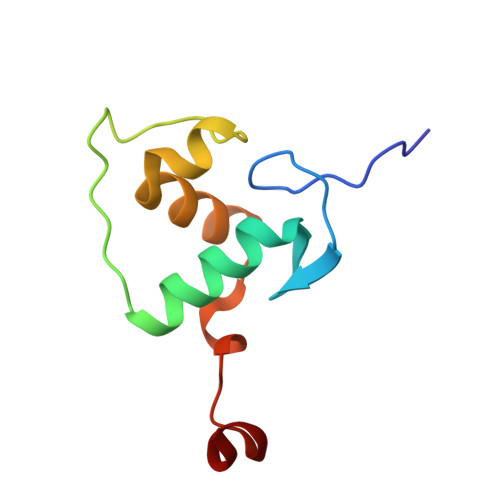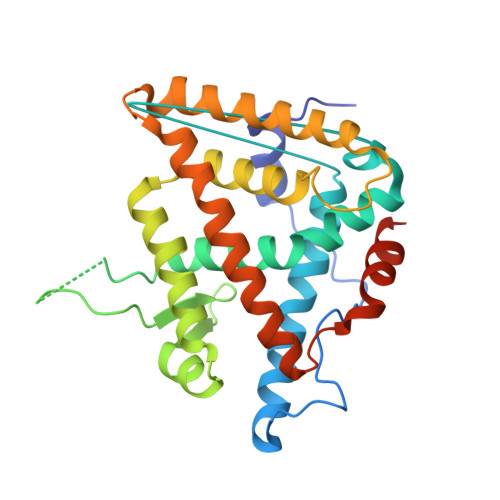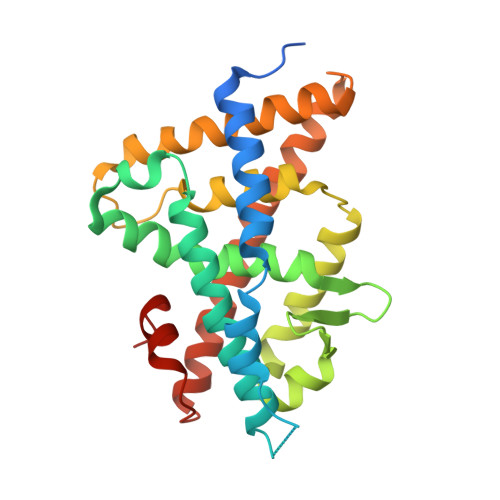The Palindromic DNA-Bound Usp-Ecr Nuclear Receptor Adopts an Asymmetric Organization with Allosteric Domain Positioning.
Maletta, M., Orlov, I., Moras, D., Billas, I.M.L., Klaholz, B.P.(2014) Nat Commun 5: 4139
- PubMed: 24942373
- DOI: https://doi.org/10.1038/ncomms5139
- Primary Citation of Related Structures:
4UMM - PubMed Abstract:
Nuclear receptors (NRs) regulate gene expression through DNA- and ligand-binding and thus represent crucial therapeutic targets. The ultraspiracle protein/ecdysone receptor (USP/EcR) complex binds to half-sites with a one base pair spaced inverted repeat (IR1), a palindromic DNA response element (RE) reminiscent of IRs observed for vertebrate steroid hormone receptors. Here we present the cryo electron microscopy structure of the USP/EcR complex bound to an IR1 RE which provides the first description of a full IR-bound NR complex. The structure reveals that even though the DNA is almost symmetric, the complex adopts a highly asymmetric architecture in which the ligand-binding domains (LBDs) are positioned 5' off-centred. Additional interactions of the USP LBD with the 5'-flanking sequence trigger transcription activity as monitored by transfection assays. The comparison with DR-bound NR complexes suggests that DNA is the major allosteric driver in inversely positioning the LBDs, which serve as the main binding-site for transcriptional regulators.
Organizational Affiliation:
1] Centre for Integrative Biology (CBI), Department of Integrated Structural Biology, IGBMC (Institute of Genetics and of Molecular and Cellular Biology), 1 rue Laurent Fries, 67404 Illkirch, France [2] Centre National de la Recherche Scientifique (CNRS) UMR 7104, 67404 Illkirch, France [3] Institut National de la Santé et de la Recherche Médicale (INSERM) U964, 67404 Illkirch, France [4] Université de Strasbourg, 67404 Strasbourg, France.





















